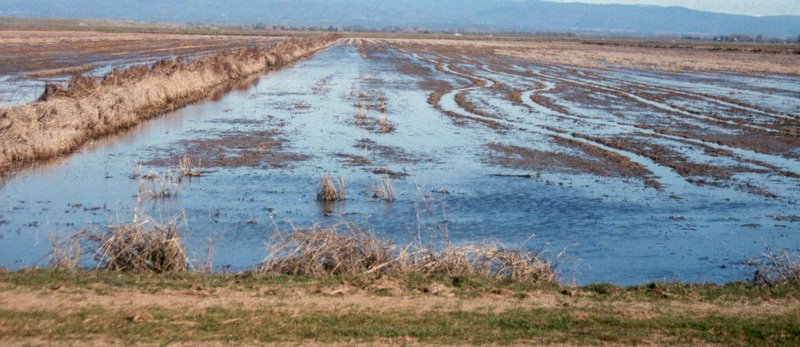Agricultural lands are great for the multi-purpose oriented landowner looking for additional recreational opportunities or income from wildlife. In addition to crops, farm land provides important feeding areas for various wildlife species, particulary waterfowl such as ducks and geese. However, these ag lands may not be attractive to waterfowl unless certain waterfowl management practices are practiced.
Most ag fields do provide some component of habitat for local wildlife throughout the year. However, many lands also serve as important habitat for migratory wildlife such as waterfowl. However, not all lands are sought after by waterfowl and that is usually because there is one important component that is missing — water. They are called waterfowl, after all, and here are some habitat management practices you can implement to create better wintering habitat, as well as duck and goose hunting.
First, it may be necessary to install water control structures in fields to allow for water manipulation and/or erosion control. Many fields have low areas or drain areas that can be modified to actually hold additional water for periods during the fall and winter. In early September, close water control structures and catch rainwater and/or pump water into the area to a dept of 6 to 12 inches.
Also, if possible, progressively flood a portion of the field every 2 to 4 weeks. This “opens” new areas for migrating birds. Ducks and geese will flock to these areas searching for waste grain and weed seeds. The same areas can be farmed “normally” during the growing season, but just make sure to drain them in advance. Leave areas flooded for as long as possible until land preparation is necessary, but areas should be drained by late March regardless.
Some areas on the farm that will not be flooded could be planted to ryegrass or winter wheat in the fall for migrating geese. Geese are attracted to green fields to feed, especially in late winter and just before migrating north again. Lush fields of ryegrass and wheat serve as giant food plots for hungry snow geese.
Lastly, in years when the field is left idle, areas within the field that tend to pond should not be disked until after July 1. This allows for local ducks to have good nesting habitat during the spring. Even southern states such as Texas have populations of nesting ducks such as mottled ducks, whistling ducks, and even some blue-winged teal during the spring.
Managing farm lands for wintering waterfowl habitat can be rewarding and fun. Whether you enjoy watching watefowl feeding or roosting on your land or even getting out and doing a little goose and duck hunting, habitat management that creates seasonal wetlands will allow you to attract more birds to your property.
